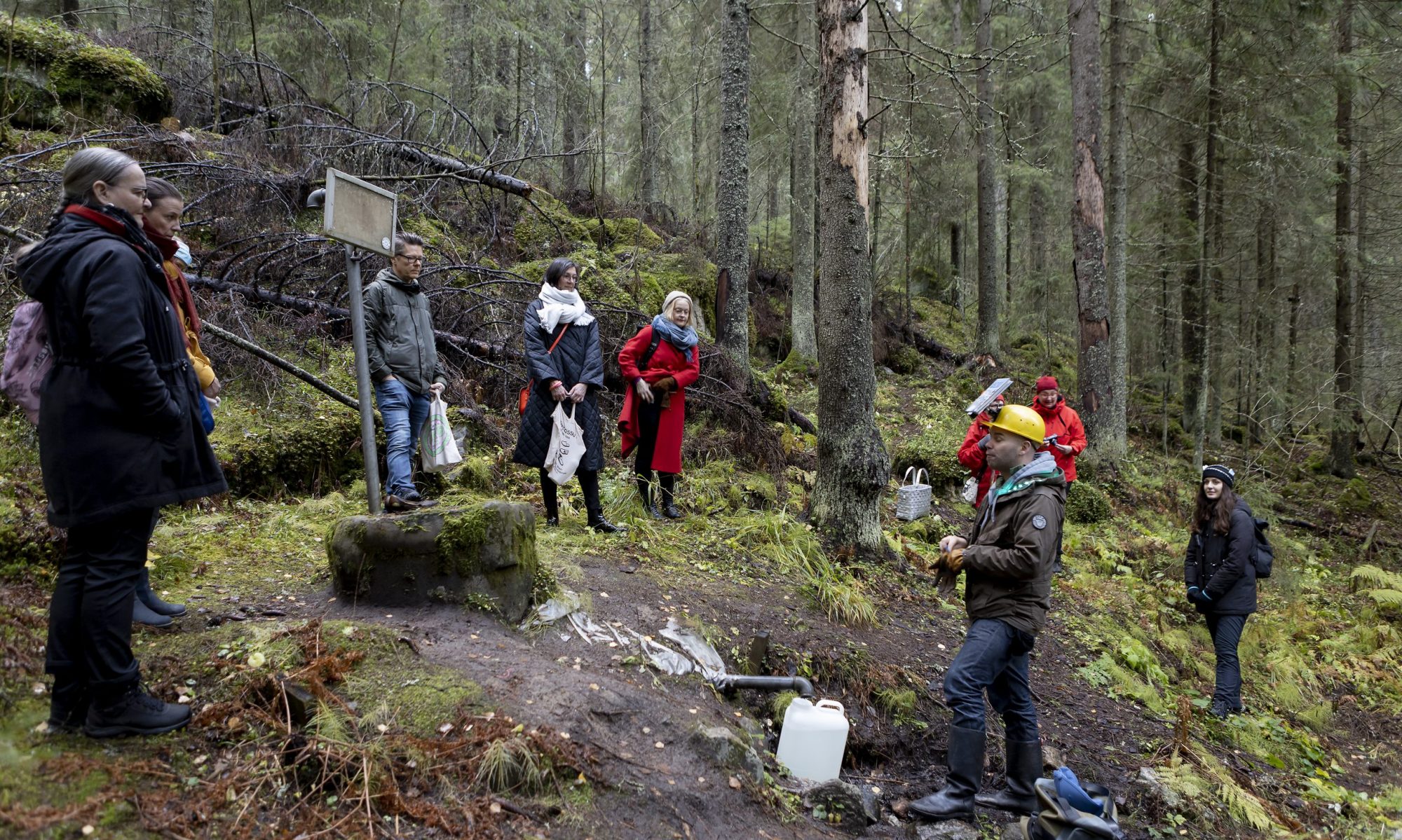Met Antti Tolvi and Laura Naukkarinen at the Kone foundation Lauttasaari manor spring party and they invited me to visit Kiilan äänipäivät in Kemiönsaari (last weekend). We came a late but saw the end of Juhani Nuorvala’s gig (featuring Jussi Liimatainen aka. Mr. Duo Kaosspad on an oscillator). Nuorvala’s gig was a good warmup for Yan Jun‘s brilliant performance in a garden. Jun used a garden water sprinkler as an instrument. The sprinkler served simultaneously as a sequencer, a phaser effect and a radar/scanner (trough which we could hear how his body was positioned). The idea that a sequencer is a radar is inspirational (particularly grid based sequencers should be approached as such).
He positioned metal pans and aluminium foil on the grass and adjusted the sprinkler movement settings for different beats, then he stood in front of the water rays in different poses (wearing a raincoat which amplified the sound of water drops). After the sprinkler jam he added Pop Rocks candy in water ponds that were formed earlier, he also ate it and changed how it sounded by adjusting how his mouth was shaped (he was signing pop rock). Then he sang atonally and started to dance slowly. The dance turned into a duetto with a mobile phone camera. The camera was set to scan for smiles and every time he smiled the device took a photo (which produced a familiar camera shutter sound). The then turned the camera to the audience and everyone who smiled got their picture taken.
He put the camera away, continued dancing and opened his fists rapidly. His nails dragged against his palms which produced a camera shutter like sounds (rapid high frequency noise with a fast attack envelope). He looked at the audience calmly and opened both his fists creating a panning noise effect that reminded us of the sprinkler sound heard earlier. This last gesture made me think that we as the audience were radar/scanner and his body positions were echoed from our gazes. Or something… A really warm and inspirational performance. I’ll definitely explore the sequencer / phaser / radar approach in the future.
I found a lot of interesting interview on Jun online. In No More “The Other Shore”: In conversation with Thomas Bey William Bailey (February 2015) Jun talks about the history of noise music in China and offers glimpse on his views on noise. He refers to Zbigniew Karkowski and promotes an “experimental art organisation” called subjam.org which I’ll have to follow in the future.
Intuition and thinking are not separated in [Chinese] tradition. No such separation of body and soul etc…but there is, strangely, a trend that takes intuition / body / honesty as a weapon against professional / thinking / rationality [in China]. It’s rather nostalgic: to resist the rapidly unfolding modernity. When I talked about truth and reality, I was actually criticised as not honest, not real. This is similar to someone being criticised as ‘not professional’ in Western culture, maybe..
When I say ‘dry sound,’ I have a context of underground music rather than electroacoustic music. After the development of effect pedals and subwoofers, we are more powerful than before. Not to mention laptops. And the cultural politics. With the distortion pedal noise became easier. With the delay pedal, psychedelic music became easier. But the early psychedelic music was clearer than today’s. It was more about playing by hand, one stroke after the other.

